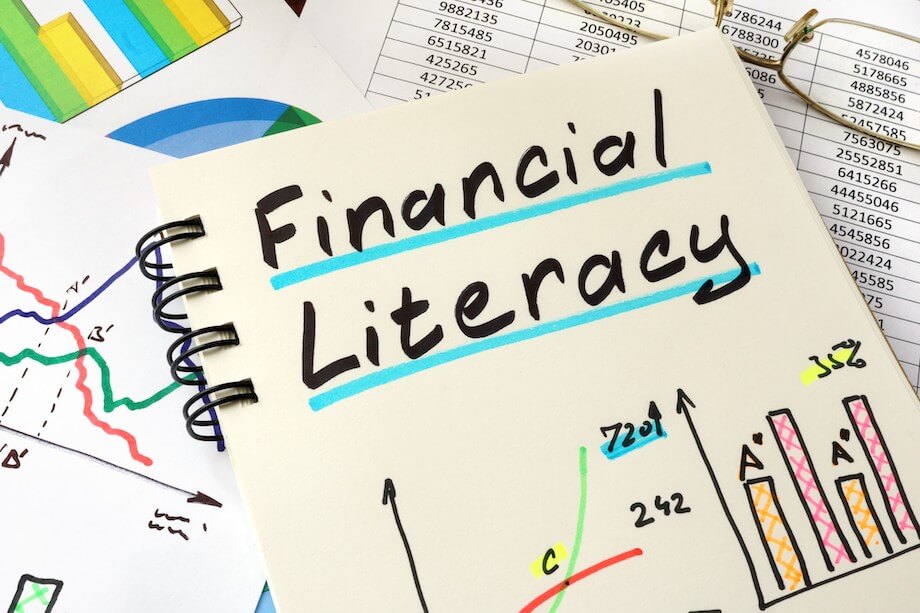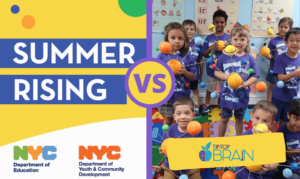“When will I ever use the Pythagorean theorem? Why don’t they teach us useful things like how to balance a checkbook?” Nearly all of us have heard this question from parents and students alike. It is true, most American schools don’t teach the most practical life skills, but that doesn’t mean kids shouldn’t learn them. But, without a special class or curriculum requirement, how do we begin to teach kids financial literacy?
We’ll help you get started here with five of the most basic lesson to teach financial literacy for kids:
1. Prioritizing Needs Vs. Wants
On the most fundamental level, children must be able to discern between wants and needs.
Financial literacy for kids begins with a fundamental distinction between needs and wants. Strike up a conversation with your little one and ask them for an example of a “want” vs. a “need.” Children, generally, understand the difference, and should be able to list needs like food and water. Of course, shelter and medicine are critically important, but it’s possible your child has never considered them “needs” so much as “givens.”
More importantly, children need to recognize how the “want vs. need” dichotomy affects budgeting. Specifically, it’s important to impress children with the idea that “needs” are to be met before “wants” are considered. In short, “needs” should be prioritized when making purchases. Meanwhile, fun, or luxurious purchases, like toys or vacations, should be bought only after your needs have been met. For older children and teenagers, the distinction between wants and needs can become more nuanced.
2. Opportunity Cost
Children also need to know money is finite, even for wealthy families.
Opportunity cost is perhaps the most important idea you can bestow upon your child. Opportunity cost is the notion that for every decision we say “yes” to, there’s another we’ve said “no” to. Simply put, financial literacy for kids can start with an idea as small as “you cannot have your cake and eat it too.”
A straightforward way to teach financial literacy for kids is to involve them in making everyday choices. The grocery store is a natural place to demonstrate opportunity cost. Kids can be asked to decide between two treats, but with the knowledge that their budget only allows them to purchase one.
You don’t always need to use concrete, monetary-based decisions to develop an understanding of opportunity cost. More abstractly, you can choose between two movies before bedtime, with the understanding there is only time to watch one.
3. Financial Literacy for Kids Through Money Mismanagement
Parents are there to help shield their children from making mistakes.
You’re making sure your child doesn’t burn the house down, or get themselves hurt, but some mistakes are best made sooner than later. When it comes to managing money, too many young people aren’t given the autonomy to fail until they’re older. However, as your child gets older, learning financial literacy through missteps will become larger and potentially harder to remedy.
The best way to avoid your adult-children from mismanaging money is by allowing them to mismanage their money as children. You might call it “teaching financial literacy for kids through safe, parent sanctioned failure”. Spending money we don’t have or making a less than sound financial decision is something we are all guilty of.
When you allow your child to make these budget-blunders, they learn the strife of money mismanagement firsthand. Perhaps they can’t purchase the video game they really wanted or go to the movies this weekend. In either case, these small losses may save them worse money-mistakes in the future, which could amount to missed rent or late car payments. In short financial literacy for kids (and adults) is all about learning from past experiences.
4. Delayed Gratification
Delayed gratification is hard for most kids to learn, but this generation is facing a truly uphill battle.
In the age of smartwatches, smartphones, and, well, smart everything, waiting has gone the way of the dinosaur. Kids have learned that satisfaction comes from Youtube and TikTok. Only taps away, and always available. Unfortunately, the cornerstone of financial literacy is delayed gratification. But hey, nobody said teaching financial literacy for kids would be easy!
[ Read: Is Youtube Bad For Kids? ]
Delayed gratification is the idea that what gratifies or satisfies us is coming down the pike. By delaying our gratification, we save money, which is critical later in life for huge expenses like retirement or college. But how do we teach kids to understand delayed gratification? Well, it’s simple, point out delays in their gratification, and model an appropriate response.
Financial literacy for kids can start with dinner time. For instance, if your child is becoming antsy dinner isn’t ready, point out why. Explain that preparing dinner is largely out of their control and requires time. Better yet, explain that you too are hungry, but patiently waiting for dinner as well. Firstly, your child probably has no clue that you too experience hunger. More importantly, they recognize that you are hungry, but patiently waiting. This notion that we often wait for what we want is sort of new for kids and teens, and even us adults seem to forget from time to time.
If your child is struggling with delayed gratification, check out or how to on reward systems at home.
5. “Real” Money
Children often lack a realistic understanding of money.
What does your child think “a lot” of money is? How much money is enough to live each week? Kids have trouble answering questions like these, because their answers are contingent upon their limited financial experience. Try to point out the prices of items you frequently purchase, or ask your child how much items cost as you shop. These small glances, and quick price-checks, begin to contextualize costs for them.
Growing up, my Dad, brother, and I used to play a game at the grocery store. My Dad would have each of us try to guess the total cost of our grocery cart. My brother, Sam, and I would try our hardest to keep track of the total as we shopped, but seldom remembered things exactly. So, we’d survey the cart frantically, produce our figures, and anxiously wait for the receipt. The winner merely got to sit in the front seat on the way home, but my Dad was just proud to have two 10-year-old boys arguing over whether “$5” is too much for eggs.
While it’s true schools don’t explicitly teach these life skills, it doesn’t mean kids can’t or won’t acquire them. Even at home, you can begin to lay down these fundamentals of financial literacy with your child. One of the largest obstacles posed by teaching financial literacy for kids is starting early enough. The sooner kids begin learning financial literacy, the better. Many people only come to learn the most basics of financial literacy once they’re earning and spending their own money. Generally, this means the sort of mistakes they learn from are more expensive than those you might make in middle school. By incorporating finances into conversation with children, and modeling responsible money-management, you’re providing a spring-board for a “rich” financial future!







